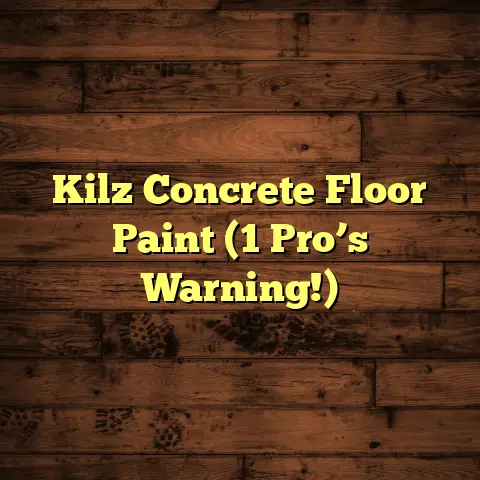Radiant Heat Cost: Slab Leak Risk? (1 Danger!)
Radiant floor heating is efficient and comfortable, but is it hiding a costly risk beneath the surface? In this post, we’ll break down the real cost of radiant heat — and reveal the one major danger homeowners often overlook: slab leaks. Before you invest, know what’s at stake.
Today, we’re diving deep into the world of radiant heating, specifically focusing on a newer material called ThermoPolyTech (TPT).
It’s gaining popularity, but is it all sunshine and roses? Let’s find out!
Section 1: Understanding Radiant Heating Systems
So, what exactly is radiant heating?
Imagine the feeling of the sun warming your skin – that’s radiant heat in action. Instead of heating the air like traditional forced-air systems, radiant heat warms objects and surfaces directly.
Think cozy floors in the winter!
There are two main types:
-
Electric Radiant Heating: Uses electric cables or mats
under the floor, in walls, or even ceilings. -
Hydronic Radiant Heating: Pumps heated water through
tubing installed in the floor (most common), walls, or
ceilings.
I’ve installed both, and hydronic systems tend to be more energy-efficient for larger areas.
Now, let’s talk about ThermoPolyTech (TPT). This composite material is a game-changer. It boasts:
- High Thermal Conductivity: Heats up quickly and
efficiently. - Flexibility: Easier to install in complex layouts.
- Durability: Resistant to cracking and corrosion.
- Chemical Resistance: Less susceptible to damage from
water additives.
TPT is often used in hydronic systems, replacing traditional PEX tubing in some applications.
Its enhanced thermal properties mean you can potentially run the system at a lower temperature, saving energy.
Section 2: The Cost of Radiant Heating Systems
Alright, let’s talk money. Radiant heating systems, while amazing, can be a significant investment.
Initial Installation Costs:
- Materials: TPT tubing, manifolds, pumps, boiler (for
hydronic), or electric mats. Expect to pay more for TPT
compared to standard PEX, but the long-term benefits
might outweigh the upfront cost. - Labor: Installation requires skilled professionals.
Expect to pay $5-$15 per square foot, depending on the
complexity of the job and your location. - Other Expenses: Permits, demolition (if retrofitting),
and potentially new flooring.
Long-Term Costs:
- Maintenance: Hydronic systems require annual boiler
inspections and occasional flushing to remove sediment.
Electric systems are generally lower maintenance. - Energy Efficiency: Radiant systems can be 20-40% more
efficient than forced-air systems. - Savings on Heating Bills: This is where radiant heat
shines! I’ve seen clients slash their heating bills by
hundreds of dollars per year.
Cost Comparison:
| Heating System | Initial Cost (per sq ft) | Annual Operating Cost |
|---|---|---|
| Forced Air | \$3 – \$7 | \$1000 – \$2000 |
| Hydronic Radiant (PEX) | \$8 – \$12 | \$600 – \$1200 |
| Hydronic Radiant (TPT) | \$10 – \$15 | \$500 – \$1000 |
Note: These are estimates and can vary based on location, system size, and energy prices.
While TPT systems might have a higher upfront cost, the potential for long-term savings is significant.
Section 3: Slab Leak Risks in Radiant Heating Systems
Okay, here’s the part nobody wants to talk about: slab leaks.
A slab leak is exactly what it sounds like – a leak in the water pipes underneath your concrete slab foundation. This can happen in any home with plumbing in the slab, but radiant heating systems are particularly vulnerable.
Imagine tiny cracks or pinholes in the tubing. Water seeps out, saturating the soil beneath the slab. Over time, this can cause:
- Foundation Damage: The soil expands and contracts,
putting pressure on the slab and causing cracks. - Mold Growth: Moisture creates a breeding ground for
mold, which can spread throughout your home. - Increased Water Bills: A slow leak can waste hundreds
of gallons of water per month.
Causes of Slab Leaks:
- Poor Quality Materials: Inferior tubing can degrade
over time, becoming brittle and prone to leaks. While TPT
is generally more durable than PEX, improper manufacturing
or handling can still lead to issues. - Installation Errors: Improperly installed fittings,
kinks in the tubing, or insufficient concrete cover can
all contribute to leaks. This is why hiring a qualified
installer is crucial. - Environmental Factors: Soil acidity, seismic activity,
and even tree roots can damage underground pipes. - Water Chemistry: Aggressive water (high or low pH) can
corrode pipes over time.
TPT and Slab Leak Risk:
TPT can mitigate some slab leak risks due to its increased durability and chemical resistance.
However, it’s not a silver bullet.
Here’s the thing: TPT is still relatively new. We don’t have decades of data on its long-term performance in real-world conditions.
Also, the connections between TPT tubing and other components (like manifolds and fittings) are potential weak points. If these connections aren’t properly made, they can leak, regardless of how strong the tubing itself is.
Section 4: The Danger of Slab Leaks
Let’s get real about the consequences of a slab leak. This isn’t just a minor inconvenience; it can be a major problem.
Structural Damage:
As I mentioned earlier, the expanding and contracting soil beneath the slab can cause cracks.
These cracks can weaken the foundation, leading to:
- Uneven Floors: Notice any sloping or sagging?
- Cracked Walls: Especially around doors and windows.
- Door and Window Problems: Sticking or difficulty
opening and closing.
In severe cases, a slab leak can compromise the structural integrity of your entire home.
Mold Growth:
Mold thrives in damp environments. A slab leak provides the perfect conditions for mold to grow, often hidden behind walls or under flooring.
Mold can cause a range of health problems, including:
- Allergic Reactions: Sneezing, runny nose, itchy eyes.
- Asthma Attacks: Difficulty breathing, wheezing.
- Respiratory Infections: Coughing, congestion.
- Skin Irritation: Rashes, hives.
Economic Impact:
Slab leaks can be incredibly expensive to repair.
Here’s a breakdown of potential costs:
- Leak Detection: \$200 – \$500
- Repair: \$2,000 – \$10,000 (or more, depending on the
severity and location of the leak) - Water Bill Increase: Hundreds or even thousands of
dollars per year. - Mold Remediation: \$500 – \$6,000 (or more, depending
on the extent of the mold) - Property Value Decrease: A history of slab leaks can
scare away potential buyers.
Case Study:
I once worked on a home where a TPT radiant heating system had been installed improperly. The installer hadn’t used the correct fittings, and several connections were leaking.
The homeowners didn’t realize there was a problem until they noticed a musty smell and their water bill skyrocketed.
By the time they called me, the slab was severely cracked, and there was significant mold growth. The repair cost them over \$20,000!
Section 5: Prevention and Detection
Alright, enough doom and gloom. Let’s talk about how to prevent slab leaks and detect them early.
Preventive Measures:
- Hire a Qualified Installer: This is the most
important step. Make sure they are experienced with radiant
heating systems and TPT tubing specifically. Check their
references and ask about their installation procedures. - Use High-Quality Materials: Don’t skimp on the tubing,
fittings, and other components. Choose reputable brands
with a proven track record. - Proper Installation Practices: Ensure the tubing is
properly supported, protected from sharp objects, and has
sufficient concrete cover. - Regular Maintenance: Have your hydronic system inspected
annually by a qualified technician. - Water Treatment: Address any issues with your water
chemistry (pH, hardness, etc.) to prevent corrosion.
Leak Detection:
- Monitor Your Water Bill: A sudden, unexplained increase
in your water bill is a red flag. - Listen for Running Water: If you hear water running
when all the faucets are off, you might have a leak. - Check for Damp Spots: Look for damp spots on your
floors or walls, especially near the perimeter of the
house. - Musty Odor: A musty smell can indicate mold growth,
which is often associated with slab leaks.
Advanced Leak Detection Methods:
- Thermal Imaging: This technology uses infrared cameras
to detect temperature differences. A slab leak will often
create a warm spot on the floor. - Moisture Meters: These devices measure the moisture
content of materials. They can be used to detect dampness
in walls, floors, and ceilings. - Acoustic Leak Detection: This method uses sensitive
microphones to listen for the sound of water leaking from
pipes.
These advanced methods can be particularly helpful in detecting leaks early, before they cause significant damage.
Section 6: Conclusion
Radiant heating systems offer incredible comfort and energy savings. TPT, with its enhanced durability and thermal properties, is a promising material for these systems.
However, slab leaks are a real risk, and they can have devastating consequences.
The key is to be proactive.
Hire a qualified installer, use high-quality materials, and monitor your system regularly.
Don’t be afraid to invest in advanced leak detection methods if you suspect a problem.
Ultimately, the decision of whether or not to install a radiant heating system is a personal one.
Weigh the benefits against the risks, and make an informed choice that’s right for you and your home.
Are you willing to take the necessary precautions to protect your investment?
Think about it!





